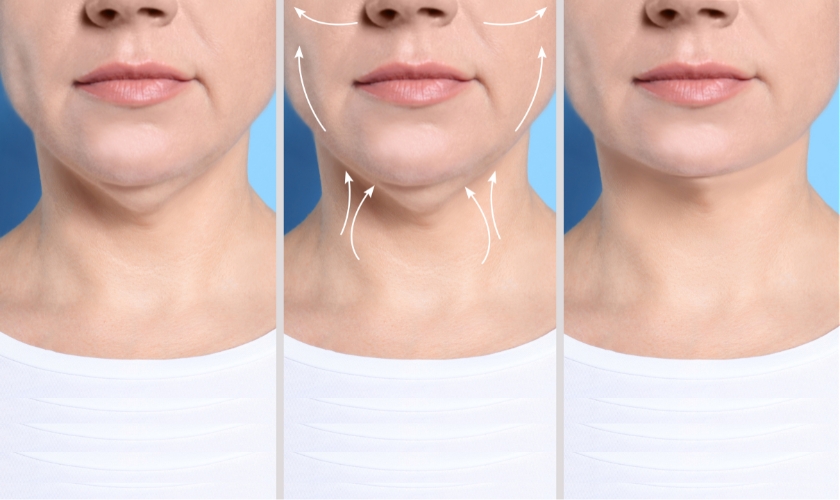


Corrective jaw surgery, also known as orthognathic surgery, is a procedure designed to correct structural problems in the jaw and improve the relationship between the upper and lower jaws. Many individuals consider this surgery for various reasons, ranging from health-related issues to aesthetic improvements.
Today’s blog is about the top five reasons people opt for corrective jaw surgery and what you need to know if you’re considering this life-changing procedure.
Unlocking a Better Life: Multifaceted Benefits of Corrective Jaw Surgery
1. Alleviating Functional Issues
One of the primary reasons people seek corrective jaw surgery is to address functional problems associated with their jaws. These issues can significantly impact daily life and overall health. Here are some common functional concerns:
- Bite Alignment: Misaligned jaws can result in an improper bite (malocclusion), leading to difficulties in chewing and speaking.
- Jaw Pain: Conditions such as temporomandibular joint (TMJ) disorder can cause chronic pain, headaches, and jaw stiffness. Corrective surgery can help alleviate these symptoms.
- Breathing Difficulties: A misaligned jaw can obstruct the airway, contributing to sleep apnea and other respiratory issues. Corrective jaw surgery can improve airflow and enhance breathing patterns.
By addressing these functional issues, patients can significantly improve their quality of life and enjoy everyday activities without discomfort or pain.
2. Enhancing Aesthetic Appearance
In addition to functional improvements, many individuals pursue corrective jaw surgery for aesthetic reasons. A balanced facial appearance can have a profound impact on self-esteem and confidence. Some aesthetic concerns include:
- Facial Symmetry: A misaligned jaw can result in an uneven facial appearance. Corrective surgery can enhance symmetry and improve the overall look of the face.
- Chin Positioning: Surgery can correct a protruding or recessed chin, contributing to a more harmonious facial profile.
- Smile Enhancement: Improving the alignment of the teeth and jaw can lead to a more attractive smile, which can boost confidence in social situations.
Many patients report feeling more confident and satisfied with their appearance following corrective jaw surgery.
3. Improving Oral Health
Corrective jaw surgery can have a positive impact on oral health. Misaligned jaws can lead to several dental issues, including:
- Tooth Wear: An improper bite can cause excessive wear on teeth, leading to cracks, chips, or other damage.
- Gum Disease: Difficulty in cleaning misaligned teeth can contribute to plaque buildup and gum disease. Aligning the jaws can enhance oral hygiene and reduce the risk of dental problems.
- Jaw Growth Issues: In some cases, corrective surgery is necessary to address jaw growth issues, which can affect overall oral health.
By improving the alignment of the jaws, patients can enhance their oral health and reduce the likelihood of future dental complications.
4. Addressing Congenital and Developmental Issues
Many individuals seek corrective jaw surgery to address congenital or developmental issues that affect the jaw. These issues may arise from genetic factors or abnormal growth patterns during childhood and adolescence. Common conditions include:
- Cleft Lip and Palate: Children born with these conditions may require corrective surgery to improve jaw alignment and function.
- Jaw Disproportion: Some individuals may have naturally occurring jaw discrepancies, such as an overbite or underbite, that require surgical intervention.
- Post-Traumatic Deformities: Accidents or injuries to the jaw can result in structural issues that necessitate corrective surgery.
Corrective jaw surgery can provide patients with the opportunity to overcome these challenges and achieve a more functional and aesthetically pleasing jaw structure.
5. Preparing for Orthodontic Treatment
For many patients, corrective jaw surgery is a crucial step before undergoing orthodontic treatment. Here’s how jaw surgery can facilitate effective orthodontic care:
- Pre-Surgical Orthodontics: In some cases, patients may need to wear braces or other orthodontic appliances before surgery to align the teeth properly.
- Post-Surgical Orthodontics: After corrective jaw surgery, additional orthodontic treatment may be necessary to fine-tune the alignment of the teeth and achieve the desired results.
- Comprehensive Treatment Plans: Collaborating with orthodontists and oral surgeons allows for a comprehensive treatment plan that addresses both jaw alignment and dental positioning.
Key Takeaways
- Functional Improvements: Corrective jaw surgery can alleviate bite problems, jaw pain, and breathing difficulties.
- Aesthetic Enhancements: Surgery can improve facial symmetry, chin positioning, and overall smile appearance.
- Oral Health Benefits: Aligning the jaws can reduce tooth wear, gum disease, and jaw growth issues.
- Congenital Issues: The surgery addresses congenital or developmental jaw issues, providing functional and aesthetic solutions.
- Orthodontic Preparation: Corrective jaw surgery is often a crucial step in comprehensive orthodontic treatment plans.
Corrective jaw surgery is a transformative procedure that can significantly enhance the quality of life for individuals facing functional, aesthetic, or oral health issues.
Whether it’s alleviating chronic pain, improving facial appearance, or preparing for orthodontic treatment, the benefits of this surgery are numerous.
If you are considering corrective jaw surgery, consult with a certified oral surgeon to discuss your options and create a tailored treatment plan that meets your needs.




